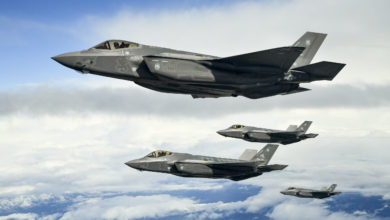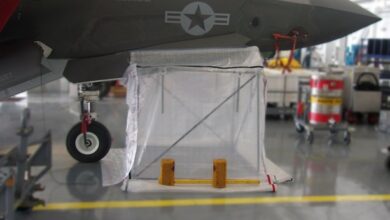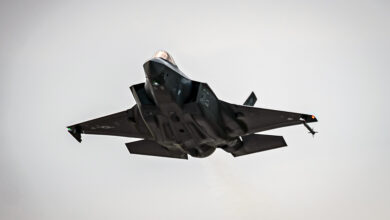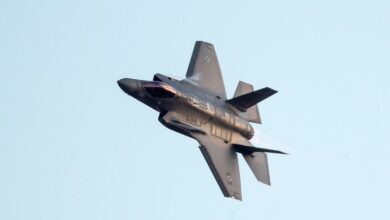Honeywell Demonstrates Upgrading F-35’s Cooling System
Honeywell demonstrated upgrading the cooling capacity of the F-35 Power and Thermal Management System (PTMS) from 30 to 80 kilowatts.
A PTMS “digital twin” demonstrated the increased cooling capacity, incorporating “low-risk advancements to heat exchangers and controls changes that further optimize system performance,” the North Carolina-based aerospace firm stated.
“Today, we have successfully demonstrated that we not only meet the F-35’s current operational needs, but we are ready to service future F-35 modernization upgrades without the need for expensive changes to the aircraft for either forward-fit or retrofit scenarios,” Honeywell Aerospace Technologies President of Defense and Space Matt Milas said.
“By enabling F-35s to update cooling capacity within our existing PTMS architecture, we can now eliminate the risks that would otherwise come from qualifying and fielding a new system that would cost taxpayers billions of dollars without any additional benefit.”
To Accommodate F-35’s Future Requirements
The upgrade is in anticipation of F-35’s future cooling requirements arising out of Block 4 upgrades.
With the current Honeywell PTMS, the upgrades are expected to further hike the aircraft’s Operation and Sustainment (O&S) costs over its lifetime.
Though a future engine upgrade offered by Pratt and Whitney, known as Engine Core Upgrade (ECU), could cancel out the O&S costs.
However, a new PTMS coupled with F135 ECU “will enable beyond Block 4 capabilities,” Breaking News quoted F-35 Lightning II Joint Program Office (JPO) spokesperson Russ Goemaere as saying.
Additional Problem
Additionally, F-35 manufacturer Lockheed Martin flagged in 2008 that the aircraft’s PTMS required to pull more bleed air — compressed air taken from within the engine to heat engine inlets — out of the aircraft’s engine than originally anticipated to help cool off its subsystems, “taxing the engine beyond its design specifications,” according to Breaking Defense.
This additional requirement risks pushing the engine’s life cycle maintenance cost to up to $38 billion, more than what the JPO anticipated.
Pentagon Debates: Upgrade or New System
Meanwhile, Honeywell’s upgrade offer comes one-and-half months after RTX’s Collin Aerospace announced testing an 80 kilowatt PTMS in January.
Both the approaches, theoretically, offer a cooling capacity in the ballpark of the Pentagon’s desired requirement, displayed in a market research solicitation in December, with 62 kilowatts being the threshold.
However, whether a new PTMS would be sought or not has not yet been decided, Goemaere told Breaking News in January.
“The JPO is completing its market research. Once the research is complete it will decide on how best to bring greater cooling and power to the warfighter.”











